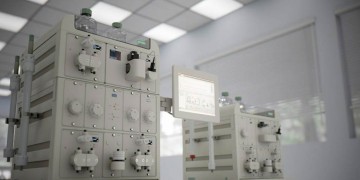
Mixed-Mode Chromatography for mAb S Aggregate Removal: Comparison of CHT™ Ceramic Hydroxyapatite, Capto adhere, and Capto adhere ImpRes
The separation of monomers from product-related impurities is quite challenging in process separations. It requires a thorough screening and an efficient resin to get efficiency in the purification process. Review the performance data of Bio-Rad’s mixed mode CHT™ Ceramic Hydroxapatite in achieving process separation efficiency and how it compares with various Capto media.

How Does the Mixed Mode Interaction of a Media Help Achieve High Selectivity and Resolution?
The best chromatography media should yield high protein purity and product recovery as well as be versatile enough to purify difficult samples. Bio-Rad’s CHT™ Ceramic Hydroxyapatite achieves this by virtue of being able to interact with the proteins through multiple modes, making the process extremely efficient. The whiteboard animation describes the mode of action of CHT.

Chromatography: Everything You Need to Know about Your Peaks
What can chromatography peaks tell us? From the quality of column packing to the purity of separated proteins, a lot can be gleaned from the peaks. Here are some definitions that can help decipher what chromatography peaks can tell us.

High-Processivity Sso7d Fusion Polymerase Improves qPCR Results
Processivity is the rate at which nucleotides are added to extend PCR products. High processivity results in a greater number of nucleotides incorporated in each polymerase binding event.

Four Tips for Developing a Sample Prep Protocol for SDS-PAGE or Chromatography
From making sure that your lysis buffer is compatible with your protein quantitation method to advice on when you do and don’t have to worry about proteases, we share helpful tips for developing a sample preparation protocol.

Five Tips for Picking the Right Cell Disruption Method for Protein Analysis
Sonicator or freeze-thaw? Detergent or enzymatic lysis? Find out how to pick the right cell disruption method for your experiment.

Bio-Rad’s Multi-D Method Addresses Unmet Chromatography Needs
Some of the frustrations in protein purification stem from unmet chromatography needs, such as automation, productivity, throughput, and reproducibility among others. Bio-Rad’s new Multi-D chromatography method addresses these and provides solutions to faster, efficient and more reliable protein purification.

Automated Multi-D Chromatography on the NGC™ System
What is Multidimensional (Multi-D) chromatography? Here is an animated explanation of how Multi-D chromatography works and what its advantages are over traditional chromatography.

Advantages of Multidimensional (Multi-D) Chromatography Using the NGC™ Chromatography System over Traditional Sequential Chromatography
Traditional sequential chromatography typically requires intensive hands-on user manipulation, which could hinder the reproducibility of protein purification runs. Multi-D chromatography aims to improve this process while maintaining the efficacy of the traditional workflow.

Tips for Keeping Your NGC™ Chromatography System in Great Shape
Doing these three simple checks will protect your chromatography system from common lab hazards.
